Study Horses and Horse Management
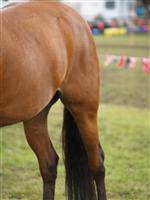
Through studying this course you will, depending on the electives chosen, be able to describe the procedures for the buying and selling of horses, differentiate between the different procedures used for the handling of horses, evaluate conformation, and understand the digestive system, including structure and function.
- Develop appropriate procedures to manage a horse at grass, explain the methods used to prepare horses for specific uses, including their grooming for different tasks, and explain commercial opportunities available in the horse industry.
- Understand feeds and feed content of grazing animals.
- Discuss equine behaviour and general animal breeding concepts.
COURSE CONTENTS
There are four compulsory modules, plus two electives; together making up around 600 hours of study.
The compulsory modules are: Horse Care I BAG102, Horse Care II BAG204, Horse Care III BAG302 and Equine Behaviour BAG216
Beyond this, you need to choose two additional modules from the following:
- Animal Anatomy and Physiology (Animal Husbandry I ) BAG101
- Animal Feed & Nutrition (Animal Husbandry III) BAG202
- Animal Health (Animal Husbandry II) BAG201
- Animal Breeding BAG301
- Farm Management
- Pasture Management
USE OUR FREE COURSE COUNSELLING SERVICE TO DISCUSS STUDY AND CAREER OPTIONS WITH ONE OF OUR EQUINE EXPERTS -someone who has lots of experience with the industry, formal training in animal sciences and an understanding of the modern equine industry.
Content of Core Modules:
Horse Care I
This has seven lessons:
- Horse Psychology and Handling
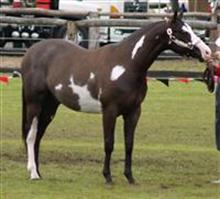 Buying a Horse
Buying a Horse- Conformation
- Feeding, Watering and Digestion
- Pasture Management
- Grooming
- Industry Applications
Horse Care II
This also has seven lessons:
- Feeds
- Stabling
- Bedding and Mucking Out
- The Foot and Shoeing Foot structure
- Exercise and Conditioning
- Tack and Tack Fitting
- Horse Facility Design
Horse Care III
This has six lessons:
- Blankets and Bandages
- Maintaining Horse Health
- Clipping, Trimming and Plaiting
- Travel and Caring from a Horse While Away from Home
- Organising and Managing an Equine Event
- Managing an Equine Enterprise
Equine Behaviour
This has seven lessons:
- Influences and Motivation
- Genetics and Behaviour
- Perception and Behaviour
- Communication and Social Behaviour
- Sexual and Reproductive Behaviour
- Learning and Training
- Behavioural Problems
___________________________________________________________________
Suggested Reading
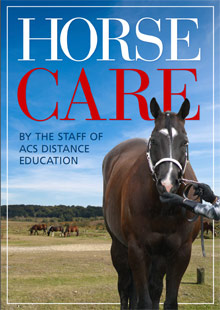 A good starting point may be to read the ebook "Horse Care" a collaborative work, written by our team of equine tutors across Australia and the UK. (Click to buy a copy)
A good starting point may be to read the ebook "Horse Care" a collaborative work, written by our team of equine tutors across Australia and the UK. (Click to buy a copy)
from the book:
Over many years, horses have been domesticated in different parts of the world, leading to a huge variety in breeds and types. Selective breeding for specific uses has formed ‘modern’ horses of four general types:
- Hotbloods (e.g. Arab and Thoroughbred)
- Warmbloods (e.g. Carriage and Sport horses)
- Coldbloods (e.g. heavy Draught horses)
- Ponies (e.g. Exmoor, Dartmoor, Icelandic )
These categories refer to the temperament and speed of the horse rather than anything to do with the actual temperature of the horse’s blood. Hotblooded horses like Arabs and Thoroughbreds tend to be more quick-witted and ‘sharp’ and also possess great speed across the ground. Coldblooded horses tend to be of a more even, quiet temperament and are generally bigger built in stature and therefor incapable of achieving speeds similar to a Thoroughbred.
It is important to appreciate the difference in the terms ‘breed’ and ‘type’ when describing horses. For a horse to be a specific breed it must possess the appropriate parentage and physical characteristics to allow it to be registered in its specific breed stud book. A ‘type’ of horse can be of any breed but is bred for a specific purpose or job.
_________________________________________________________________________
Working With Horses
There is so much more to using and enjoying horses than simply riding them. Since horses were used in cities and farms around the world (it was thought there were approximately 25,000 horses living and working in New York City in the late 1800’s), a mostly recreational industry has emerged from horse ownership today. From this, the following businesses and services are common place: riding stables, training facilities, breeding/stud farms, transportation companies and producers, and clothing retailers. Beyond recreation, there are further opportunities within the equine industry such as health care, farrier services and alternative medicine practices.
Common Equine Careers
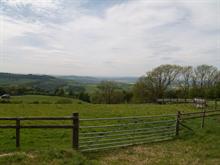 Working with animals of any kind is a continuously rewarding experience. As someone who chooses this as his or her field of study or employment he or she can make a remarkable impact or difference on the lives of those worked with. You can choose to prevent suffering and heal sick or injured horses. You can be involved in breeding and rearing. You can train and educate horses for pleasure or competition standard. You can show people how to care for their horses.
Working with animals of any kind is a continuously rewarding experience. As someone who chooses this as his or her field of study or employment he or she can make a remarkable impact or difference on the lives of those worked with. You can choose to prevent suffering and heal sick or injured horses. You can be involved in breeding and rearing. You can train and educate horses for pleasure or competition standard. You can show people how to care for their horses.
Breeders
To become a successful horse breeder a formal education is often required. Understanding of the nature and characteristics of horse breeds, science of animal breeding and stud management is also vital. A breeder is required to have sound and adequate knowledge of nutritious feeding, genetics and foaling, safe stabling conditions, equine diseases and first aid. Sound business practices and record keeping is also vital. These attributes are not only for the safety and care of the horses, but also to ensure margins are profitable.
A large amount of financial investment is needed for successful breeding – investment in pastures, stables and outbuildings, transportation, veterinary medicine, feed supplies and employee skills are all vital. This doesn’t come cheap. If you are fortunate enough to have been born into a family of equine professionals then you may find you work in a family business or inherit a reputable and long-established company. For the majority of people, it’s often about proving your skills and worth to find yourself in a position of stud owner or manager.
So how can you get started? Firstly, you must gain experience as a horse farm employee and learn how to evaluate mares and stallions as producers of foals. Experience is essential. Most people start their careers this way. You will also need to have gained high school qualifications as a minimum; qualifications from a college (animal science, husbandry, biology and genetics is ideal) will also help. To study equine science and management, it is useful to own or have access to horses.
Owner or manager of riding school/agistment/livery yard
Here your customers are horse owners and the most important thing for you is that your customers know and believe you care for the horses. In order to do this, you need to invest in fencing, pastures, feeds and safety features. Do not cut corners, as poor stable management, inadequate cleaning, poor transportation, inadequate feeding and grooming will all lead to increased veterinary bills. To own an agistment or livery yard, you should re-invest your profits into the property, not as a legal requirement, but more so as a commitment to your business and the welfare of the horses homed on your property.
Be friendly and personable too. Your customers want to know you are approachable. This does not mean you are overly flexible or a ‘walk over’. You should have terms and conditions which are appropriate and fair. Ask your customers to agree and sign your set-out terms and conditions. You must have appropriate insurance for when things go wrong. A fire or a flood could devastate you financially for example.
Often facilities such as riding yards use their ponies or horses for riding lessons and experiences to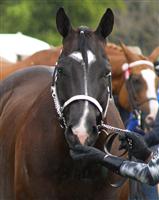 young people and adults with learning difficulties. Physically impaired people can also ride horses. This is more often referred to as therapeutic riding programs now. It would be your responsibility to ensure safety standards and appropriate teaching methods are followed (if you were not running the classes personally). As owner or manager you are accountable for what happens on your property. You would be expected to ensure only quiet and gentle, well mannered and well schooled horses are used for this purpose.
young people and adults with learning difficulties. Physically impaired people can also ride horses. This is more often referred to as therapeutic riding programs now. It would be your responsibility to ensure safety standards and appropriate teaching methods are followed (if you were not running the classes personally). As owner or manager you are accountable for what happens on your property. You would be expected to ensure only quiet and gentle, well mannered and well schooled horses are used for this purpose.
Horse riding instructor
Instructors who carry out therapeutic riding lessons for anyone with learning difficulties can sometimes be known as horse riding therapists/horse therapists. Horse riding is valuable in this situation as it often helps to improve the lives of those people. Riding can improve coordination, posture, balance, strength and muscle tone. There is also the psychological benefit which is worth mentioning as riding horses can give a sense of self-confidence and accomplishment. This provides the rider with a positive feeling and increased self-worth. To work specifically as a horse therapist, it is expected you would start by becoming a general horse riding instructor.
Communication skills are most important. Achieving a proper seat and being able to use the hand and leg aids are what makes a competent rider. In order to help people become a confident and capable rider, the instructor needs to communicate effectively and have an endless amount of patience!
A self-employed riding instructor can charge rates per hour. A self-employed instructor is likely to travel to a number of stable yards and agistments to where their customers keep their horses. The customer will receive lessons on their own horse. By working this way, the riding instructor is able to keep costs to a minimum by not providing the rider with a horse.
Advanced riding lessons, for specialist riding such as show-jumping and dressage for example, generally are charged at higher rates than basic lessons for the novice and intermediate rider. Professional indemnity insurance is also important.
Horse trainer
The horse trainer is a trainer who is able to work with the horse from when it is young to ensure it is taught to accept a halter or head collar, walk on a rope lead, learn to accept the bit and saddle. It will also normally be trained to accept a rider and learn to respond to the reins and the legs of the rider. This process can take months, or even 1-2 years and is called breaking. If the horse has a bad experience during breaking, this will stay with them for a very long time, sometimes even a lifetime.
During breaking, a trainer can work at building a relationship with the foal, building a relationship through soothing words and gentle handling. A trainer needs to have patience, an understanding of the horse’s mind, knowledge of anatomy and physiology, act consistently and have kindness. Basic training involves implementing a consistent and reasonable punishment and reward system. This doesn’t necessarily involve treats but is more about giving affectionate pats and softly spoken praise when the horse has performed well or carried out an action correctly. The punishment signals to correct misbehaviour involves a stern voice command, increased leg and rein pressure. Smacking is not necessary, nor is it appropriate.
Careers in horse training often result in becoming horse behaviour specialists who are used to help break old routines of ill-mannered horses, or often trainers become involved on the racing industry or showing industry. Racing and showing trainers will usually work closely with the rider and will have knowledge of equine biology and exercise science.
Horse massage therapist or chiropractor
This role is more often called an equine sports massage therapist. Massage therapy for horses is important when horses are overworked, ridden by inexperienced riders or saddle sore. Horse massage is an increasingly accepted form of care for horses. Some may question its uses and benefits, however we can also see that horses tend to enjoy the contact and will often relax into a peaceful state during massage.
It would be wise to check on the qualifications of horse massage therapists in your locality to find out more about the accepted level of education required in this field to progress into equine massage. Experience of remedial massage of humans is a starting point, in addition to knowledge of horse anatomy and physiology. Obtaining a veterinary science degree may not be necessary.
Horse chiropractors work with the bones, more than the soft tissue, however they too will need a sound understanding of the horses anatomy and physiology and conformation.
Horse riders (professional, ranchers, mounted police)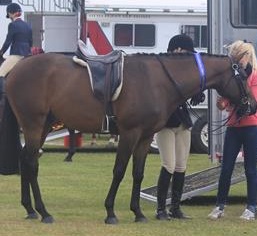
If someone earns an income through horse riding we would consider them to be a professional rider. Some career options for professional riders include race horse jockeys, harness drivers, show jumpers or dressage competitors. These people are often considered to be professional athletes. Racing and competitions mean professional riders must often travel long and far in order to attend race meetings and events. This can be costly. Very well known and reputable riders may find they have achieved a celebrity status and can be high earners.
Working on a ranch or cattle station is often for cattle mustering. Ranches and cattle stations don’t exist in every state, region or country but it’s worth mentioning the riding skills and courage which are required to work out in the country. Cattle mustering is fast paced and exhilarating and it normally requires a number of horses and riders working together.
A different kind of ranch experience is for those people who visit for a themed holiday. There are a number of fascinating tourism opportunities for people who would like a taste of farm life or life on a working ranch. Many ranches have holiday homes where visitors can be accommodated during their stay. For the ranch workers, looking after the horses continues with the usual daily tasks of feeding, grooming and mucking out; along with preparing the horses for taking the guests out on trail rides or for cattle mustering experiences.
Another example of professional horse riding is in the mounted police force. In the police the mounted section enables riders to enter situations where cars or other modes of transport are either unable to go or are less effective at patrolling or controlling. For the most part, mounted police officers are used in crowd control situations, especially where crowd dispersal is required e.g. in a riot situation. In that type of environment, a rider needs to be extremely competent and be able to remain calm at all times. Another example of the use of horses by the police is in search and rescue operations.
Farriers (also known as smiths)
This job is physically demanding. Farriers will work at farms, races, events and more. Farriers are a mobile specialist tradespeople traveling from place to place so reliable transport is essential. They also need a number of specialist tools – the financial investment is extensive. Farriers today are required to have much more knowledge of the hoof and foot anatomy. Farriers need to be able to recognise hoof problems and work to correct any problems by tailoring the fit of the shoe. Shoeing should also take account of the comfort and performance of the horse (in line with any hoof problems). Farriers also need to be able to handle horses correctly, even more so as shoeing is not an experience every horse accepts with ease.
It is thought that a reasonable income can be achieved if the workmanship and ability of the farrier is quality. Annual salaries range for different levels of farrier knowledge and skill. So for example, a journeyman-level farrier will be in the lowest income bracket, however if the farrier has a degree in equine science they can easily add thousands of dollars to their annual salary. It’s up to the farrier what he/she chooses to charge, but the more education and ongoing education a farrier has will enable him/her to increase his/her income accordingly.
Education
You can work to teach people about horses. There are a number of equine colleges and schools which run courses in horse care, equine studies, equine science and riding instruction… the list is endless. The qualifications range from short courses in horse care for the hobby-horse owner to Master degrees in Equine Exercise Physiology (example only). There are classes available to study online, there are blended learning options, where people can learn online and have hands-on experience and there are fulltime education facilities where learners are required to live onsite with the horses and learn on the job.
As a trainer in one of these environments, you will be responsible for teaching and assessing competence levels. As an educator you will be required to possess listening and communication skills and aim to make lessons effective and fun.
Equine health
Equine health and medicine is usually carried out through a veterinary practice. It is generally individual care that is given to the horse, rather than medical attention for an entire group (herd). Normally equine vets or vet assistants are required to travel to where the horse(s) is kept. This can add a large amount of traveling time onto the day of a vet. Alternatively, some vets will work from specialist large animal veterinary clinics where they keep horses onsite for ongoing care and attention – for example in post-operative care. Days can be long too, if a horse needs emergency attention, vets are often needed to work out of hours or overnight. Working in vet care means being available to work out of normal business hours.
Equine retail and online supplier
There are a number of retail outlets and online stores for the sale of new and used equine products. These consist of feed and farm supplies, clothing for the rider and the horse, transportation vehicles, saddlery, first aid and medicinal supplies and specialist equipment.
The quality of any items available in stores or online can differ considerably and prices and availability of goods can also range. Setting up a store can be a costly venture and someone would be required to have sales skills and knowledge, customer service skills or an ability to manage an online web store.
HOW DOES STUDY GET YOU A JOB?
There are always jobs for knowlegeable people in the equine industry - there are also many less than properly qualified people out there!
If would like to work in this
field then this course will help you along the way but there are also
many other factors that people look at other than a qualification when
considering you for a job.
Although doing a course may not guarantee you a job – it will set you
apart from those that have not studied at all and it will improve your
personal choices when applying for jobs.
Each
job listed usually gets a huge amount of response – when employers
choose people to interview they will look at a range of factors – what
you have studied will be just one of those factors. In the equine industry this is no different. You need to be able
to catch a potential employer’s attention – stand out from the rest.
So what do employers look for?
- Great communication skills: verbal, written and also the ability to use a computer.
- Problem solving skills: thinking on your feet and working through problems in an orderly way.
- Efficiency: doing things in a logical order without compromising accuracy improves efficiency.
- Knowledge and skills demanded of the job.
- A passion for the work and willingness to learn.
- Presentation and grooming - people who present as being well organised and well-groomed will impress.
How Will A Course Help Me To Gain those Skills?
Choosing
the right course will help i.e. one that develops knowledge, practical
and also your problem solving skills. Not all courses do this. At ACS
our courses focus on Problem Based Learning so this enables the student
to develop these skills and at the same time using this learning method
also improves you knowledge retention and recall.
What Can You do to Improve Your Career Prospects?
- Choose
a course that you are passionate about – be open to learning and use
this course to start building your future. Today we are expected to keep
learning and studying in order to keep up with a world that is rapidly
changing. Learning is a lifelong experience. Study
a course that makes you stand out - a qualification that is different
to all the other applicants will always catch the attention of a boss,
and may be the difference between getting an interview or not.
- Network
with people in the industry, attend conferences and trade shows – make
yourself known to people in the industry in general.
- Try to build a range of skills – multi-skilled people catch the eye of the employer or potential employer.
- Write a good CV and ask for help if you need it. Tutors
at this school will help our students with their C.V.'s if you ask -no
cost. Resume Writing services can also be used, but they charge.
- Recognise your weaknesses and work on improving them - not just academically. And also know your strengths and demonstrate them.